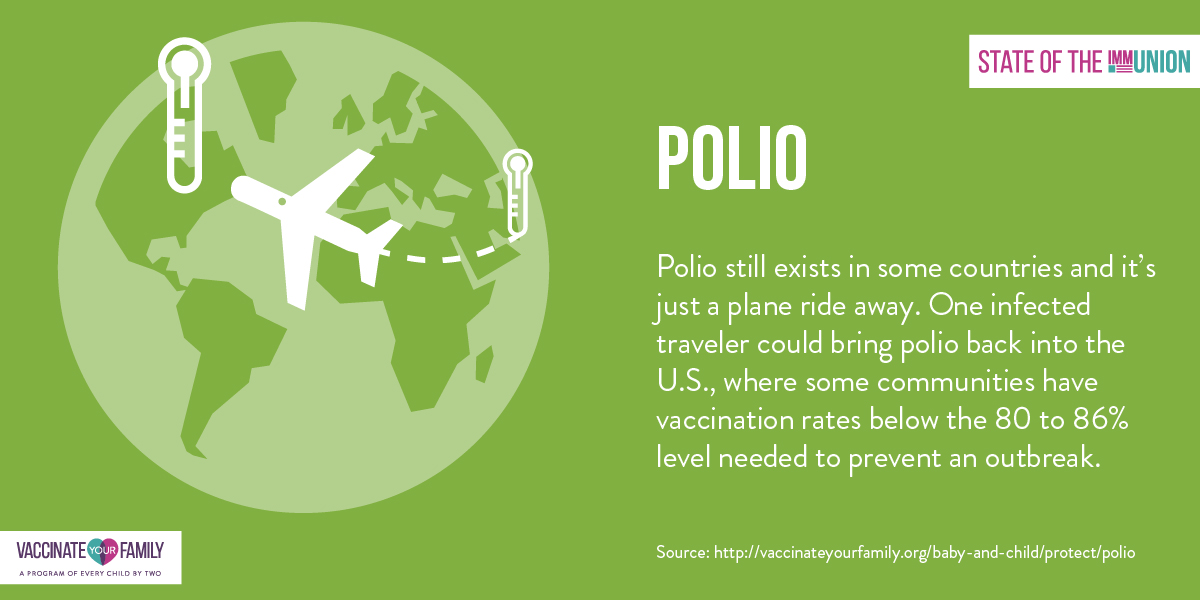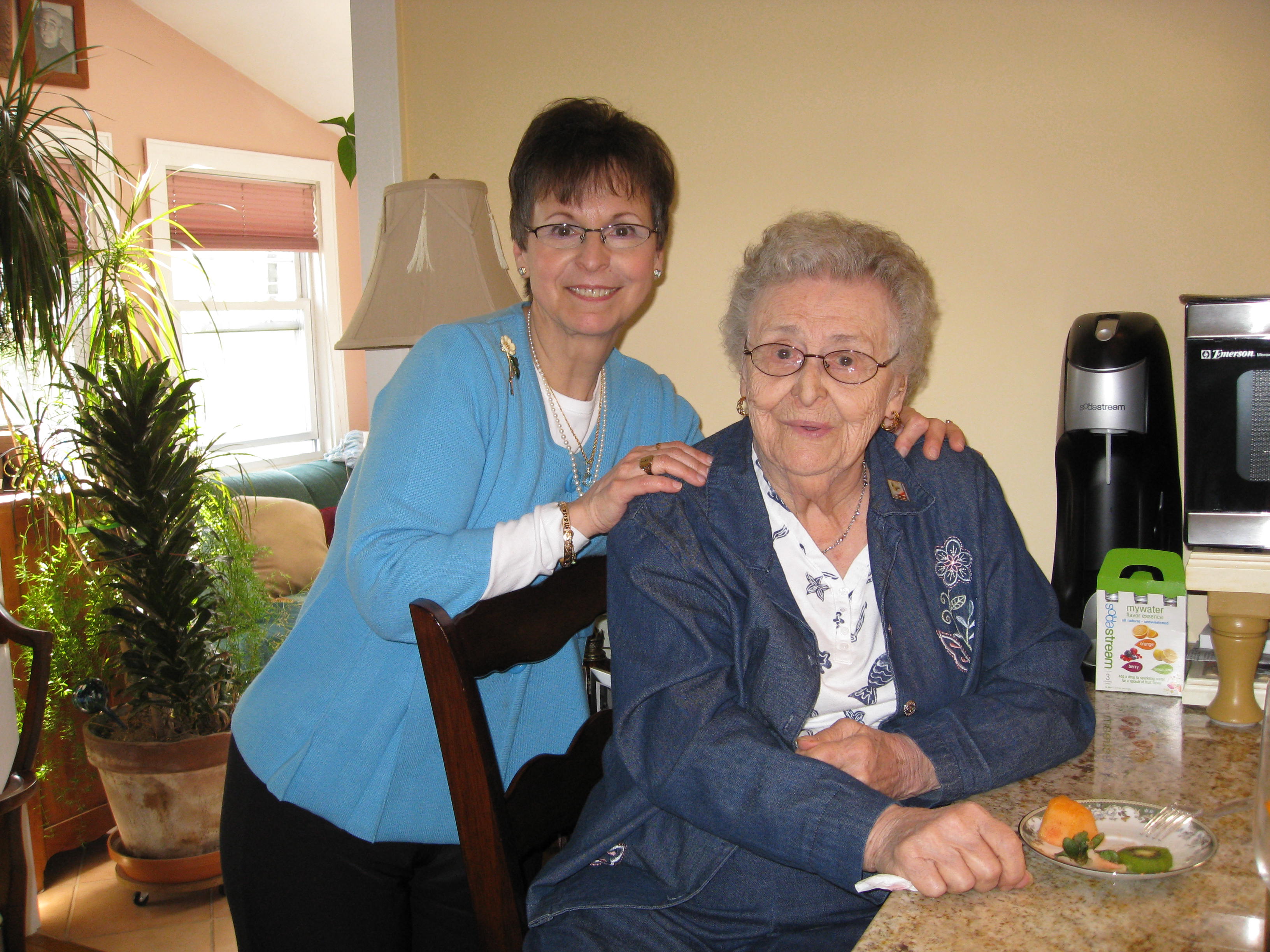Nurses, Teachers and Mothers All Influence Immunization Uptake
May 11, 2018
This week is not only National Nurses Week, but it’s Teacher Appreciation Week and soon to be Mother’s Day. As I sat down to acknowledge nurses, teachers and mothers, one person came to mind – Mary Beth Koslap-Petraco, DNP, PNP-BC, CPNP
 If you ever get the chance to meet Dr. Koslap-Petraco, there are three things you will immediately recognize.
If you ever get the chance to meet Dr. Koslap-Petraco, there are three things you will immediately recognize.
She is a leader among nurses.
She is incredibly passionate about immunization education.
And she adores her family – especially her mother.
A few years ago, Dr. Koslap-Petraco shared the story of how her mother’s life was forever altered by polio. In honor of her mother, Mildred Bliss Koslap, who recently passed away at the age of 98, I want to share her story once again. The Koslap family story is a reminder of the role that mothers, nurses and teachers have in ensuring that people of all ages embrace immunization as a way to prevent debilitating diseases.
Dr. Koslap-Petraco begins the story by explaining that it was the summer of 1923, and her mother was only three years old:
“During that period in our history, it was common for families like mine to escape the heat of New York City and travel upstate to cooler weather. That summer, the family chose to reside in a guest house in Utica, NY. My mom arrived to Utica a fully-functioning and fun-loving child, but on a subsequent Sunday morning, she remembers not being able to get out of bed due to paralysis on the right side of her body. She was able to scream out for help initially, but her voice consistently diminished throughout the day, only to disappear for a week.
Her father called for medical assistance, but during this time in Utica, people strictly followed what were known as Blue Laws—forbidding any type of work or major exertion to be made on Sunday. With time, my grandfather was able to convince a kind-hearted Jewish doctor to come over. He instantly recognized my mother’s condition as polio. The periodic massages and other treatments that my mother had to undergo were hassle enough for a young child, but the emotional strain for her was even worse.
After a short time, her siblings were not allowed to play with her, for fear that they might come down with polio themselves. And when my mother—born left-handed—entered school, she was constantly punished by the nuns who directed her to write using her right hand. What they did not understand was that my mother had lost the ability to grasp objects with this hand as a result of her polio. To this day she remains able to hold nothing more than a glass of water with her right hand.
To me, it’s important that I never lose sight of the experiences like this that my mother and her family had to endure that one hot summer in 1923. What’s even more important is that I acknowledge the fact that polio is no longer a significant threat to the health of people in America. Science and research have delivered so much to us, including the means to eliminate the threat of major preventable diseases like polio.”
 Mildred appears to have had a great life, raising three strong, successful and independent daughters and living to know not only five grandsons, but seven precious great-grandchildren. But that doesn’t mean she didn’t suffer throughout her life from her experience with polio at the age of three. Her scars served as a constant reminder of the dangers of polio – a disease that greatly impacted her life, her parents’ lives, her siblings’ lives and even the lives of her children, grandchildren and great-grandchildren.
Mildred appears to have had a great life, raising three strong, successful and independent daughters and living to know not only five grandsons, but seven precious great-grandchildren. But that doesn’t mean she didn’t suffer throughout her life from her experience with polio at the age of three. Her scars served as a constant reminder of the dangers of polio – a disease that greatly impacted her life, her parents’ lives, her siblings’ lives and even the lives of her children, grandchildren and great-grandchildren.
As a mother, I’m happy that my children will never have to suffer through the same experiences that Mildred did. I’m even grateful that my own parents chose to vaccinate me as a child and that they raised me to value the preventive power of vaccines.
I’m thankful to all the nurses who take the time to educate others about the benefits of vaccines, care for people who are suffering from vaccine preventable diseases, and bear the responsibility of administering vaccines. I’m also encouraged by non-profit organizations like Nurses Who Vaccinate, which help to position nurses and other health care professionals as vocal vaccine advocates among their colleagues, patients, and the public.
And I’m grateful to all the teachers who do their part to educate people of all ages about the dangers of infectious diseases and how vaccines can help to boost our immune system. I’m especially impressed with organizations like The Vaccine Makers Project which offers scientifically supported, historically accurate, and emotionally compelling content that teachers can use in the classroom to help excite young people about the power of vaccines.
While polio does still exist in the world, we are extremely close to eradicating it, thanks to the success of vaccines. However, as long as there are communities with polio vaccination rates that fall below the 80-86% level that is needed to prevent the spread of the disease, there is still a risk of a polio outbreak As you take the time to thank mothers, nurses and teachers this week, be sure to also learn more about polio and polio prevention on the Vaccinate Your Family website.

Related Posts
The Public Health Emergency (PHE) declaration is ending on May 11, but COVID remains a threat. The PHE was first declared in 2020 in response to the spread of COVID-19 to allow for special...
This post was originally published with MediaPlanet in the FutureOfPersonalHealth.com Winter Wellness Issue, and was written by Vaccinate Your Family. Are you more likely to get sick during the winter? Yep – more viruses...

Leave a Reply